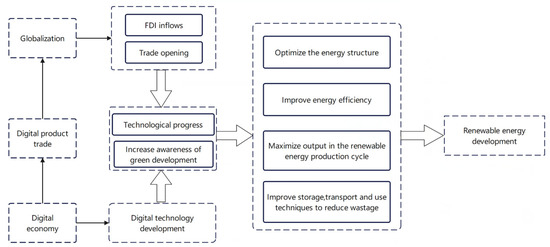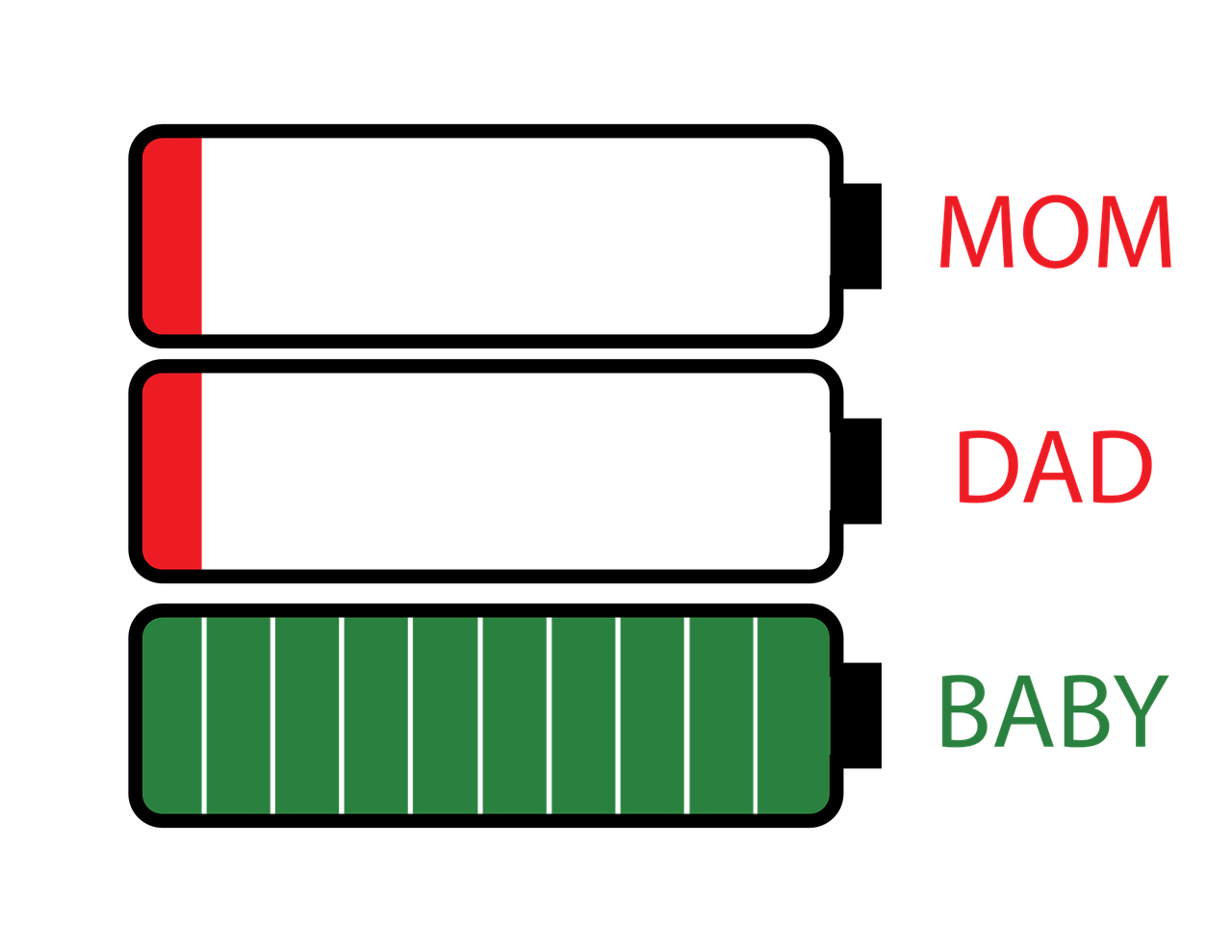In the quest for a sustainable future, the integration of renewable energy sources like wind and solar power has emerged as a game-changer. However, the intermittent nature of these sources poses a significant challenge. The solution? Energy storage systems, with batteries at the forefront, are revolutionizing the way we harness and utilize renewable energy. This article explores the pivotal role batteries play in achieving a sustainable and clean energy landscape.
In the quest for a sustainable future, the integration of renewable energy sources like wind and solar power has emerged as a game-changer. These sources provide clean and abundant energy, reducing our reliance on fossil fuels and helping combat climate change. However, the intermittent nature of these sources poses a significant challenge to creating a reliable and stable energy supply.
The solution? Energy storage systems, with batteries at the forefront, are revolutionizing the way we harness and utilize renewable energy. These systems address the unpredictability of wind and solar power, making it possible to store surplus energy when it’s abundant and release it when demand peaks or when the sun isn’t shining, and the wind isn’t blowing. This article explores the pivotal role batteries play in achieving a sustainable and clean energy landscape and how they are shaping the future of power generation and consumption.
Unlocking the Full Potential of Renewable Energy:
Renewable energy sources have long been hailed as the key to a sustainable future. They produce electricity without emitting harmful greenhouse gases, making them vital in the fight against climate change. However, their intermittent nature has limited their widespread adoption. Without a way to store excess energy, we couldn’t rely solely on renewables to meet our energy needs.
Batteries and other energy storage technologies bridge this gap. They allow us to capture energy when it’s abundant and release it when it’s needed, creating a continuous and reliable energy supply. As battery technology advances, we’re increasingly able to unlock the full potential of renewable energy sources, harnessing their power to its fullest extent.
Grid Stability and Energy Security:
The integration of batteries into the power grid offers more than just a backup source of energy. It enhances the overall stability and security of our energy infrastructure. Batteries provide rapid-response capabilities to counteract grid disturbances, ensuring that even in the face of unexpected events or surges in demand, the lights stay on and industries keep running.
Furthermore, energy storage systems make us less dependent on centralized power plants, reducing vulnerability to disruptions caused by natural disasters or cyberattacks. They empower communities to generate, store, and manage their energy locally, enhancing energy security and resilience.
Beyond Traditional Applications:
Batteries are not limited to supporting renewable energy sources on a large scale. They are also making a significant impact on a smaller, more personal level. Residential solar installations with battery storage allow homeowners to become energy self-sufficient, decreasing their reliance on the grid and reducing utility bills. Electric vehicles (EVs) are becoming more popular, and their batteries can serve as mobile storage units, potentially feeding excess energy back into the grid during peak demand periods.
The Future of Sustainable Energy:
As we look to the future, batteries are set to play an increasingly critical role in our pursuit of a sustainable and clean energy landscape. Research and development efforts are focused on improving battery efficiency, reducing costs, and developing more environmentally friendly materials. These advancements will drive the adoption of renewable energy sources and energy storage systems, ultimately shaping a more sustainable and resilient energy future for generations to come.
In conclusion, batteries are not just a technological innovation; they are the linchpin that transforms intermittent renewable energy sources into a consistent and reliable power supply. As we continue to invest in battery technology and integrate energy storage systems into our energy infrastructure, we are taking significant strides towards a cleaner, more sustainable, and ultimately more secure energy future.
Additionally, you can find further information on this topic by visiting this page: Patent paving the way to a more sustainable future

Renewable energy sources are subject to fluctuations in supply due to weather conditions and time of day. Batteries act as a vital bridge, storing excess energy during periods of high production and releasing it when demand exceeds supply. This ensures a steady and reliable energy supply, reducing the need for fossil fuel-based backup systems.
Renewable energy sources, such as solar and wind, have become cornerstones of the transition to a more sustainable and environmentally friendly energy future. However, they do come with their own unique challenges, primarily the inherent variability in supply dictated by weather conditions and the time of day. This is where energy storage, particularly in the form of batteries, emerges as a critical component in the renewable energy ecosystem.
Balancing the Fluctuations:
Batteries play a pivotal role in balancing the fluctuations in renewable energy supply. During periods of high production, like sunny days or windy nights, excess energy generated by solar panels or wind turbines can be stored in batteries. This surplus energy is captured and preserved for later use, effectively bridging the gap between production and consumption.
Ensuring Reliability:
One of the primary benefits of energy storage systems is their ability to ensure a steady and reliable energy supply. When renewable energy generation drops due to cloudy skies or calm winds, batteries step in to release the stored energy. This prevents disruptions in the power grid and ensures that electricity is available when needed, regardless of weather conditions.
Reducing Dependence on Fossil Fuels:
Perhaps one of the most significant advantages of energy storage is its capacity to reduce our reliance on fossil fuel-based backup systems. In the past, conventional power plants, often fueled by coal or natural gas, were used to compensate for renewable energy shortfalls. This not only increased greenhouse gas emissions but also hindered the transition to cleaner energy sources.
Enhancing Grid Resilience:
Energy storage systems also contribute to grid resilience. They can respond rapidly to fluctuations in supply and demand, stabilizing the grid and preventing blackouts. This is particularly valuable during extreme weather events or unforeseen disruptions, where a robust energy storage infrastructure can be a lifeline.
Empowering Distributed Energy Resources:
Batteries are key enablers of distributed energy resources, allowing homes and businesses to become more self-reliant in terms of energy generation and consumption. Solar panels combined with home energy storage systems, for example, provide homeowners with greater control over their energy usage and costs.
A Sustainable Energy Future:
In the grand scheme of transitioning to a sustainable energy future, batteries and energy storage represent a crucial piece of the puzzle. They not only make renewable energy sources more practical but also accelerate the phase-out of fossil fuels. As technology continues to advance, energy storage solutions are becoming more efficient, cost-effective, and environmentally friendly, further cementing their role in the global shift towards clean energy.
In conclusion, batteries and energy storage are indispensable components of our journey towards a more sustainable and resilient energy system. By effectively managing the fluctuations in renewable energy supply, they ensure a reliable, clean, and efficient power grid. As we continue to invest in and develop energy storage technologies, we are making significant strides towards a future where renewable energy sources play a dominant role, reducing our carbon footprint and safeguarding the planet for generations to come.
Don’t stop here; you can continue your exploration by following this link for more details: Sustainable Road Transport: Why Battery Electric Trucks Lead the …

The integration of batteries into the power grid enhances its stability and resilience. Batteries can rapidly respond to grid disturbances, such as sudden demand spikes or unexpected outages, by injecting power into the grid or absorbing excess energy. This feature ensures uninterrupted power supply and minimizes disruptions.
nullIf you’d like to dive deeper into this subject, there’s more to discover on this page: The Importance of Energy Storage for a Renewable Future

Batteries empower renewable energy sources to reach their full potential. They store surplus energy generated during periods of low demand or high production, allowing for its utilization when needed most. This optimizes the efficiency of renewable installations and reduces wastage of clean energy.
Batteries, often considered the unsung heroes of the renewable energy revolution, play a pivotal role in unlocking the full potential of sustainable power sources. Their importance lies in their ability to bridge the gap between energy generation and consumption, ensuring that renewable energy can be harnessed effectively and consistently.
Renewable energy sources, such as solar and wind, are inherently intermittent. The sun doesn’t always shine, and the wind doesn’t always blow at the desired intensity. This variability poses a significant challenge to the reliability of these energy sources. However, batteries step in as a crucial solution to this challenge.
During periods of high energy production, when the sun is beaming or the wind is gusting, surplus energy is generated. Without efficient storage, this excess energy might go to waste, as it cannot always be instantly consumed or transmitted to the grid. Batteries act as the saviors of surplus energy, capturing it and storing it for later use.
This stored energy can be deployed during periods of high demand or when renewable generation is at a low point. This flexibility optimizes the overall efficiency of renewable installations, as it reduces reliance on fossil fuels or other backup sources during lulls in clean energy production. The result is a more consistent and reliable supply of renewable energy, which is essential for grid stability and reducing greenhouse gas emissions.
Batteries also empower renewable energy systems to provide ancillary services to the grid, such as frequency regulation and peak shaving. They can respond rapidly to fluctuations in demand, injecting stored energy when needed and alleviating stress on the grid. This dynamic capability contributes to a more stable and resilient energy infrastructure.
Furthermore, batteries enhance the economic viability of renewable energy projects. They enable energy producers to participate in energy markets, selling surplus energy during peak demand periods when prices are higher, and buying electricity when it’s cheaper. This not only benefits renewable energy producers but also contributes to more competitive energy markets.
In conclusion, batteries are the linchpin in the transition to a cleaner and more sustainable energy future. They facilitate the efficient use of renewable energy, reduce wastage, and enhance the reliability and economic viability of clean power sources. As technology advances and energy storage capacity continues to grow, batteries will remain a critical component in maximizing the potential of renewable energy and reducing our reliance on fossil fuels.
Should you desire more in-depth information, it’s available for your perusal on this page: Tackling Variability Storage Innovations for Wind Power

By enabling the efficient use of renewable energy, batteries contribute significantly to the reduction of greenhouse gas emissions. They make it possible to shift away from fossil fuels, thereby decreasing the carbon footprint of energy production and consumption.
Batteries are pivotal players in the global effort to combat climate change by facilitating the integration of renewable energy sources into our power systems. Their role goes beyond mere energy storage; they are key enablers of a sustainable and eco-friendly energy landscape. Here’s how:
Storing Renewable Energy: One of the challenges of renewable energy sources like wind and solar is their intermittent nature. Batteries act as a buffer, allowing excess energy generated during peak times to be stored and used when needed. This capability smooths out the variability of renewables and ensures a consistent and reliable power supply.
Reducing Dependency on Fossil Fuels: Batteries play a crucial role in reducing our reliance on fossil fuels for energy generation. When renewable sources are not available, stored energy from batteries can step in, mitigating the need for fossil fuel-based power plants to meet peak demands. This shift away from carbon-intensive energy sources directly contributes to greenhouse gas reduction.
Grid Stability: Battery systems enhance the stability and resilience of electrical grids. They provide quick response times in case of fluctuations in supply or demand, helping to maintain grid frequency and voltage levels. This stability is essential for the efficient integration of renewables and the overall reliability of the grid.
Lowering Carbon Footprint: The widespread adoption of batteries leads to a substantial reduction in the carbon footprint of energy production and consumption. It allows for cleaner energy sources to replace coal and natural gas, which are major contributors to greenhouse gas emissions. This transition to cleaner energy sources is a critical step in achieving climate goals.
Promoting Electrification: Batteries also enable the electrification of various sectors, such as transportation. Electric vehicles (EVs) are becoming increasingly popular, and their widespread adoption relies on high-capacity batteries. By electrifying transportation, we can further reduce emissions, especially if the electricity is sourced from renewable energy.
Innovation and Advancements: Continued research and development in battery technology are driving improvements in energy storage capacity, efficiency, and cost-effectiveness. As batteries become more efficient and affordable, their potential to accelerate the transition to renewable energy sources becomes even more significant.
Global Impact: The impact of batteries extends globally, reaching regions where access to reliable energy is limited. Off-grid renewable energy systems with battery storage can provide clean and sustainable power to remote areas, improving living conditions and reducing reliance on polluting energy sources.
In conclusion, batteries are not just energy storage devices; they are catalysts for change in the energy landscape. They empower the efficient use of renewable energy, reduce greenhouse gas emissions, and promote a sustainable and cleaner future. As we continue to harness the potential of batteries, we take significant strides toward a world where renewable energy is the norm, and the carbon footprint of our energy systems is dramatically reduced.
You can also read more about this here: Sustainable Road Transport: Why Battery Electric Trucks Lead the …

Batteries support the decentralization of energy generation. Residential and commercial properties equipped with solar panels and battery storage systems can become self-sufficient in terms of energy production. This not only reduces reliance on centralized power plants but also empowers individuals and businesses to control their energy destiny.
“Batteries support the decentralization of energy generation, ushering in a transformative era in the energy landscape. Residential and commercial properties equipped with solar panels and battery storage systems can become self-sufficient in terms of energy production. This not only reduces reliance on centralized power plants but also empowers individuals and businesses to control their energy destiny in several profound ways:
1. Energy Independence: With batteries, property owners can break free from the traditional grid-based energy supply. They can generate their own electricity from renewable sources like solar panels and store excess energy in batteries for use during peak demand or when the sun isn’t shining. This newfound independence from utility companies allows for greater resilience in the face of grid outages or fluctuations.
2. Cost Savings: Decentralized energy generation can lead to substantial cost savings over time. By producing and storing their own energy, property owners can reduce their reliance on electricity supplied by utility companies. This not only lowers energy bills but also insulates them from the impact of fluctuating energy prices, ultimately improving financial stability.
3. Environmental Sustainability: The adoption of batteries in conjunction with renewable energy sources aligns with sustainability goals. By reducing reliance on fossil fuels and decreasing greenhouse gas emissions, decentralized energy systems contribute to a more sustainable and eco-friendly future.
4. Grid Support: Decentralized energy generation isn’t just about self-sufficiency; it can also benefit the larger grid. During times of excess energy production, property owners can feed surplus electricity back into the grid, helping to stabilize it and potentially earning them credits or revenue. This two-way flow of energy enhances the overall reliability of the grid.
5. Peak Demand Management: Batteries enable property owners to manage their energy usage strategically. They can draw on stored energy during peak demand periods when electricity costs are high, thus reducing their reliance on expensive grid power. This smart management not only saves money but also alleviates stress on the grid during times of high demand.
6. Energy Security: For businesses and critical infrastructure, decentralized energy systems provide an added layer of security. In case of natural disasters or other emergencies that disrupt the central grid, properties with battery storage can continue to function independently, ensuring that essential services remain operational.
7. Technological Advancements: The rapid advancement of battery technology is making decentralized energy even more accessible and efficient. Energy storage systems are becoming more affordable, with improved capacity and lifespan, making them increasingly attractive for residential and commercial applications.
8. Community Resilience: Neighborhoods and communities can band together to create microgrids, sharing energy resources and enhancing resilience during large-scale power outages. This collaborative approach to energy generation fosters a sense of community and mutual support.
In summary, batteries are catalysts for the decentralization of energy generation, offering myriad benefits such as energy independence, cost savings, environmental sustainability, and enhanced grid stability. As battery technology continues to evolve, the transition to decentralized energy systems promises a more resilient, efficient, and sustainable energy future for individuals, businesses, and communities alike.”
Should you desire more in-depth information, it’s available for your perusal on this page: Energy Storage System – Power Generation Products

The demand for batteries in renewable energy storage has spurred innovation and economies of scale. As technology advances and production volumes increase, battery costs have been steadily declining. This trend makes renewable energy storage solutions more accessible and cost-effective.
nullIf you’d like to dive deeper into this subject, there’s more to discover on this page: Patent paving the way to a more sustainable future

While batteries offer immense potential, challenges such as grid integration and recycling of battery materials need to be addressed. Innovations in grid infrastructure and responsible battery disposal and recycling practices are essential for the sustainable growth of this technology.
The evolution of battery technology has undoubtedly revolutionized the way we power our devices, homes, and even vehicles. However, as we harness the immense potential of batteries, it is crucial to recognize and address the challenges that accompany this transformation. Two significant challenges, in particular, stand out: grid integration and responsible battery disposal and recycling.
Grid Integration for Stability: Batteries, especially when used on a large scale, have the potential to stabilize and enhance electrical grids. They can store excess energy during periods of low demand and release it when demand is high, thus reducing the need for fossil fuel-based peaker plants and enhancing grid reliability. However, to fully unlock this potential, seamless integration into existing grid infrastructure is essential. This requires the development of advanced grid management systems and smart technology to optimize battery usage and distribution.
Energy Storage Systems: Innovative energy storage systems are being deployed to help address grid integration challenges. These systems combine batteries with sophisticated software and control systems, enabling utilities to efficiently manage energy flow and storage across the grid.
Renewable Energy Support: Batteries are a critical component in supporting the growth of renewable energy sources like solar and wind. They store excess energy generated during sunny or windy periods and release it when conditions are less favorable. This integration helps smooth out the intermittent nature of renewable energy production.
Responsible Battery Disposal and Recycling: As battery usage proliferates, so does the need for sustainable end-of-life solutions. Irresponsible disposal of batteries can have environmental and health repercussions, as they often contain hazardous materials. Recycling battery materials not only mitigates these risks but also reduces the need for mining and processing of finite resources.
Battery Recycling Technologies: Innovative recycling technologies are emerging to efficiently recover valuable materials from used batteries. These processes involve the extraction of metals like lithium, cobalt, and nickel, which can then be reused in new battery production.
Circular Economy Approach: Adopting a circular economy approach in battery manufacturing and disposal emphasizes resource efficiency and reduces waste. Manufacturers are increasingly designing batteries with recyclability in mind, making it easier to recover materials and reduce environmental impact.
Environmental Regulations: Stringent environmental regulations are being implemented to ensure the responsible disposal and recycling of batteries. These regulations encourage manufacturers and consumers to take responsibility for the entire lifecycle of batteries, from production to recycling.
In conclusion, while batteries offer tremendous potential for transforming energy systems and reducing environmental impact, addressing challenges like grid integration and responsible disposal/recycling is paramount. Innovations in grid infrastructure and recycling technologies, coupled with supportive policies and regulations, are vital for realizing the full benefits of battery technology while minimizing its environmental footprint. By tackling these challenges head-on, we can pave the way for a sustainable energy future powered by advanced battery solutions.
If you’d like to dive deeper into this subject, there’s more to discover on this page: Renewable Energy Integration Enhancing Grid Flexibility in …

Batteries are no longer just portable power sources for our devices; they are pivotal in the transition to a sustainable and clean energy future. Their ability to store and release energy on demand, coupled with their grid-stabilizing capabilities, has made them indispensable in harnessing the full potential of renewable energy sources. As we continue to invest in battery technology and integrate them into our energy systems, we are paving the way for a greener, more resilient, and sustainable future for generations to come.
Batteries have undergone a profound transformation, evolving from mere power sources for our devices into essential components of our journey towards a sustainable and clean energy future. Their significance cannot be overstated, as they play a pivotal role in reshaping our energy landscape.
Energy Storage Revolution: Batteries are at the forefront of an energy storage revolution. They empower us to capture surplus energy from renewable sources like wind and solar when it’s abundant and release it when needed, bridging the intermittent nature of renewables.
Grid Resilience: Battery systems enhance the resilience of our power grids. They act as rapid-response units, stepping in to stabilize the grid during sudden fluctuations in energy supply or demand, thereby preventing blackouts and ensuring uninterrupted electricity supply.
Reducing Greenhouse Gas Emissions: By enabling efficient energy storage and management, batteries contribute significantly to reducing greenhouse gas emissions. They facilitate the integration of renewables into our energy mix, diminishing our reliance on fossil fuels.
Energy Independence: Battery technology empowers communities and individuals to become more energy independent. Residential battery systems allow homeowners to store excess energy from their solar panels, reducing their reliance on the centralized grid and lowering their energy bills.
Economical Energy Solutions: As battery technology advances and economies of scale come into play, the cost of batteries continues to decrease. This makes clean energy solutions more affordable and accessible to a broader range of consumers and industries.
R&D and Innovation: Continued investment in battery research and development is driving innovation in energy storage. Breakthroughs in battery chemistry, durability, and efficiency are expanding the possibilities for renewable energy utilization.
Electrification of Transportation: Batteries are not limited to stationary applications. They are the backbone of electric vehicles (EVs), revolutionizing transportation by reducing emissions and dependence on fossil fuels.
Job Creation: The growth of the battery industry has the potential to create jobs and stimulate economic growth. Manufacturing, research, and installation of battery systems contribute to local and global employment opportunities.
Global Collaboration: The transition to a sustainable energy future through battery technology is a global endeavor. Collaborative efforts between countries, industries, and researchers are crucial in accelerating progress and sharing knowledge.
Future Generations: As we invest in battery technology and integrate it into our energy systems, we are paving the way for a greener, more resilient, and sustainable future. This commitment to sustainability is a gift to future generations, ensuring they inherit a planet with cleaner energy sources and reduced environmental impact.
In conclusion, batteries have transcended their conventional role and emerged as enablers of a sustainable energy ecosystem. Their versatility, grid-stabilizing capabilities, and contribution to reducing greenhouse gas emissions are propelling us toward a cleaner, greener future. By nurturing battery technology and its integration into our energy infrastructure, we are sowing the seeds for a world where clean energy is abundant, reliable, and accessible to all.
Looking for more insights? You’ll find them right here in our extended coverage: Power of Connection | EV Battery Story | Cox Careers

More links
If you’d like to dive deeper into this subject, there’s more to discover on this page: Shirley Meng recognized for contributions to battery science …
